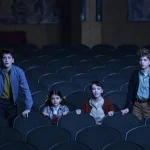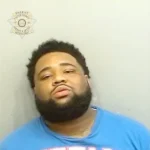Randy Jones wasn’t just a pitcher — he was a San Diego legend. Known for his incredible two-year peak and his down-to-earth personality, Jones became one of the most beloved players in Padres history. The former Cy Young Award winner died on Tuesday, the team announced Wednesday. He was 75.
The Padres shared an emotional statement:
“With deep sorrow and heavy hearts, the Padres mourn the passing of our beloved left-hander, Randy Jones… He was a cornerstone of our franchise for over five decades… RJ will be greatly missed.” The team also extended condolences to his wife, Marie, and the entire Jones family.
Jones played 10 seasons in the Major Leagues from 1973 to 1982. His breakout years — 1975 and 1976 — turned him into the face of the Padres, a franchise still in its early days. In those two seasons alone, he recorded a 42-26 record, a 2.50 ERA, 11 shutouts, and an unbelievable 43 complete games for teams that weren’t even close to .500.
He was an All-Star in both seasons, earning the save in 1975 and the win as the National League’s starting pitcher in 1976. After finishing second in Cy Young voting in 1975 behind Tom Seaver, he won the award the following year.
“When he was on, I’ve never seen a better pitcher,” teammate Merv Rettenmund once said — high praise, especially considering he played with legends like Jim Palmer and Nolan Ryan.
Jones dominated in unique ways. In 1975, he led the National League with a 2.24 ERA. In 1976, he led all of baseball in wins (22), starts (40), innings (315 1/3), and complete games (25). He even made the cover of Sports Illustrated labeled as a “Threat to win 30.”
But fans didn’t love him just for the stats. His curly 1970s perm, soft-tossing style, and humble personality made him relatable. His sinker — barely hitting 80 mph — frustrated hitters so badly that Pete Rose once stopped switch-hitting and tried to bat left-handed. Jones struck him out on three sliders anyway.
In San Diego, his starts were an event. When he walked to the bullpen before games, fans rose to their feet. In 1976, the Padres averaged nearly 28,000 fans for his home starts — almost double the crowd on other days.
Former broadcaster Bob Chandler summed it up perfectly: “It was David against Goliath. He didn’t throw hard, the Padres had never had a winning season… but when he pitched, we expected to win.”
Jones’ heavy workload came at a cost. He tore a nerve near his left biceps tendon in his final start of 1976 and needed surgery. He never fully returned to form and was traded to the Mets after 1980. He played two more years in New York before retiring in 1983.
Even after his playing days, his bond with San Diego only grew stronger. He remained a Padres ambassador, often seen greeting fans at Petco Park. His Randy Jones BBQ stands became a local favorite, and he frequently appeared on pregame and postgame broadcasts.
In 2017, he shared that he was being treated for throat cancer — the result of a lifetime of chewing tobacco. The outpouring of support touched him deeply. In 2018, he proudly announced he was cancer-free.
“It was a magical relationship that we had,” Jones said of San Diego fans. “I still look forward to seeing a lot of those folks.”
Born Jan. 12, 1950, in Fullerton, California, Randall Leo Jones was drafted in 1972 and reached the Majors just a year later. His career totals included a 100-123 record and a 3.42 ERA — numbers that don’t begin to capture his influence.
The Padres retired his No. 35 in 1997 and inducted him into their Hall of Fame in 1999, forever cementing his legacy as one of the franchise’s most important figures.
Randy Jones, a true “everyman” hero for San Diego baseball fans and a symbol of grit and heart, leaves behind a legacy that will never be forgotten.








